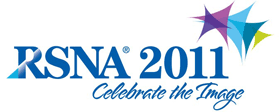
Abstract Archives of the RSNA, 2011
LL-HSS-MO2A
Developing a Process Maturity Methodology for Improvements in Quality and Efficiency of Radiology Departments
Scientific Informal (Poster) Presentations
Presented on November 28, 2011
Presented as part of LL-HSS-MO: Health Services, Policy, and Research
Joachim Lotz MD, Presenter: Nothing to Disclose
Nadir Fennan MD, Abstract Co-Author: Consultant, Siemens AG
Sabine Bankel, Abstract Co-Author: Consultant, Siemens AG
Michael Koschnike DPhil, Abstract Co-Author: Consultant, Siemens AG
It is a major challenge for radiologists to continuously improve quality and efficiency of their diagnostic and therapeutic service while maintaining profitability. To identify a significant potential for improvement within a short time, we developed a comprehensive method using best practices to assess the maturity level of medical process in radiology departments.
Based on the Capability Maturity Model Integration framework, a well-known principle in software and other industries, we transferred this methodology into a medical maturity model for evaluating clinical processes in radiology departments. Key elements integrated in this process maturity model are clinical guidelines, best practice processes and results of relevant scientific studies. The presented maturity model consists of a questionnaire with about 500 criteria related to defined key process areas in a radiology department.
The medical maturity model compares the existing processes of an organization to those of comparable best practice organizations. Based on this comparison suitable measures for improving processes are identified. By assigning these process areas to a maturity level between 1 and 5, the maturity score can be calculated and used to benchmark organizations regarding their process quality and efficiency. The feasibility and accuracy of this approach was evaluated in several hospitals and diagnostic centers in Germany and the USA. Results showed a high level of reproducibility, a low interobserver variability and a good accordance with the participant departments’ self-estimation. So far the highest achieved maturity score amounted to 3.5.
The described method is a standardized approach to benchmark radiology departments against best practice-standards. Its result is a defined process-maturity-score used to identify potentials for optimizing processes and efficiency in medical imaging facilities.
To continuously improve clinical quality and patient treatment while reducing their overall operating costs in radiology imaging facilities.
Lotz, J,
Fennan, N,
Bankel, S,
Koschnike, M,
Developing a Process Maturity Methodology for Improvements in Quality and Efficiency of Radiology Departments. Radiological Society of North America 2011 Scientific Assembly and Annual Meeting, November 26 - December 2, 2011 ,Chicago IL.
http://archive.rsna.org/2011/11016391.html

